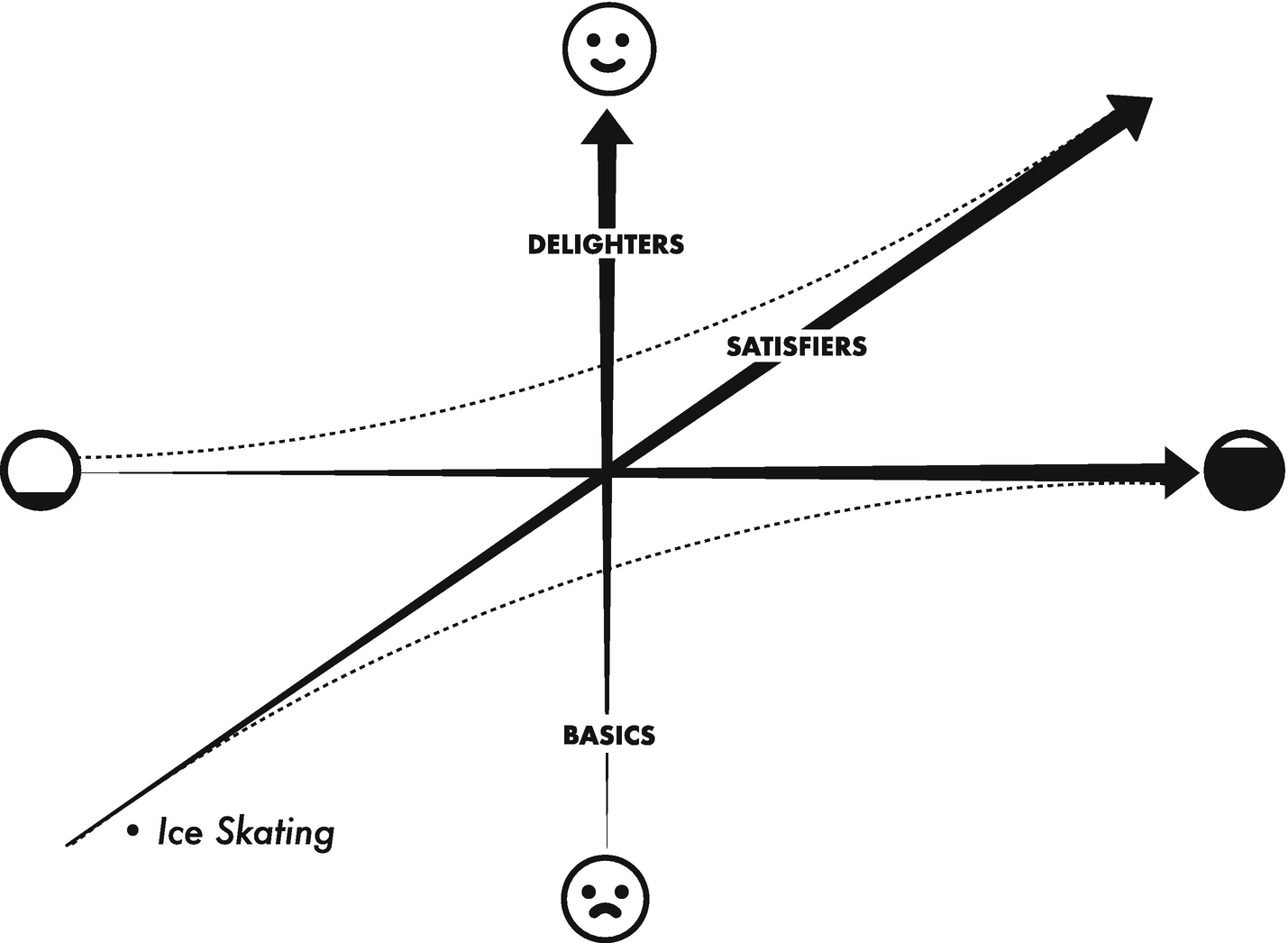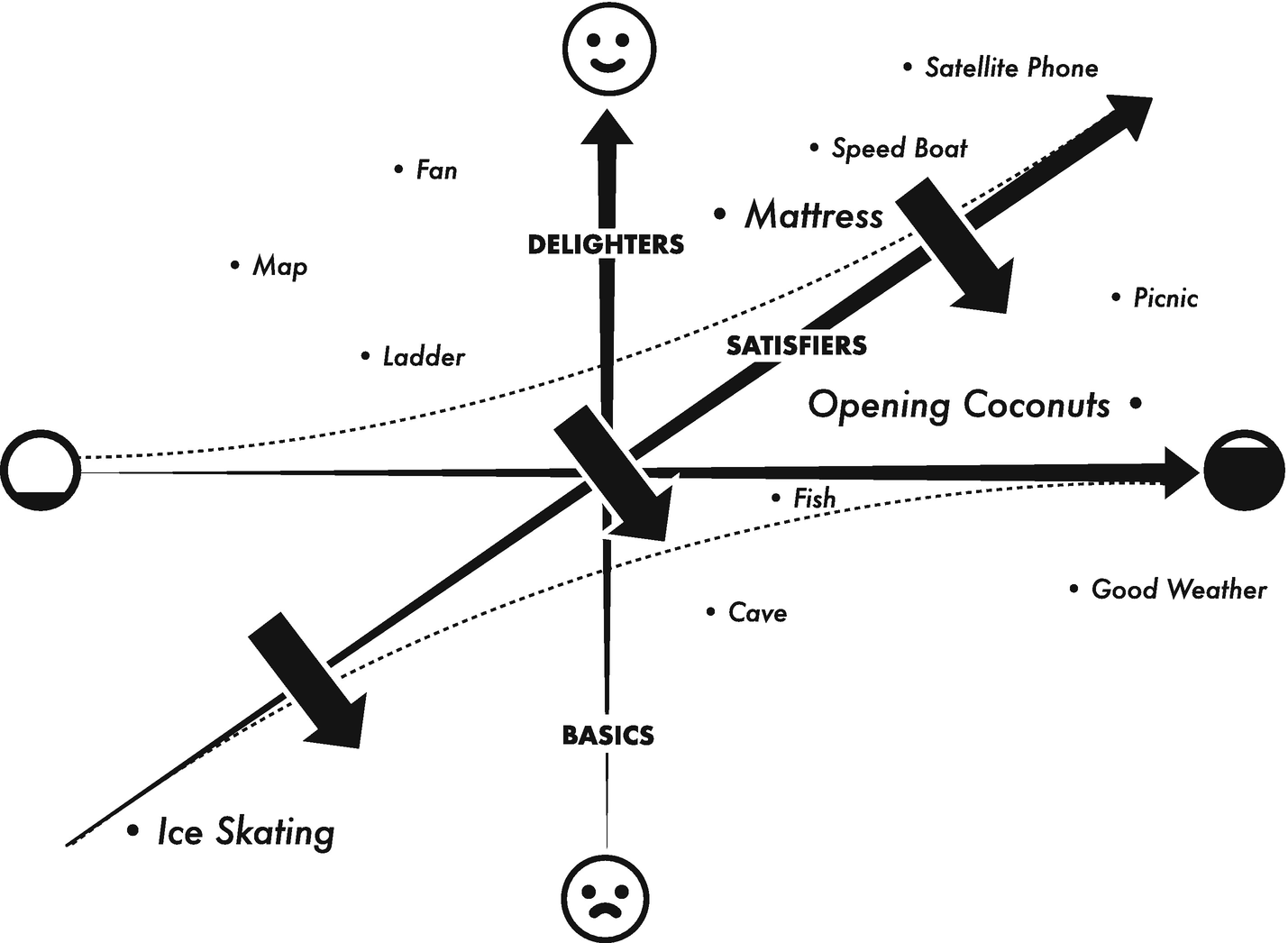Chuck Noland fell out of the sky and washed up on an island. Within minutes of experiencing engine failure, his FedEx MD-11 cargo plane crashed into the dark, churning waves of the Pacific. The next morning, he awoke on the windswept shoreline of an uncharted oceanic island. Exhausted and alone, he scurried to gather together an armful of waterlogged FedEx packages that littered the beach. Each package’s contents held an assortment of items, though none would reach their intended destination on time, for they were also stranded on the island, having fallen out of the plane’s cargo hold the night prior. Some items would prove beneficial, while others would not—a familiar dilemma for castaways1, as well as software users.
The packages contained the following items: a pair of Riedell Total Competition ice skates, a Wilson volleyball, a box of video cassettes, a dissolution of marriage decree, and a trashy evening dress. A pocketknife would have been helpful. So too would have a water filter or a satellite phone. However, none of those were available to Tom Hanks’ character in the movie Cast Away. On the plus side, the island provided a wealth of natural resources, including coconuts, shellfish, and a reasonably comfortable cave. He would have to make do with the items in the packages, the island’s natural resources, and nothing more.
Software users face a similar dilemma—they must make do with what we give them. We build little islands of digital experiences, such as websites, apps, and applications. Then we supply these experiences with features. Features range from simple functionality to complex utilities. One feature may help a user log in to a website. Another may apply a photo filter within an app. Yet, we often neglect to supply them with the right features. Like island castaways collecting supplies, users will use features they need and discard the ones they do not. The features you provide determine whether their experience is a struggle or a pleasure.
Struggle or Pleasure
In the early 1980s, Noriaki Kano, professor emeritus at Tokyo University, developed a model to understand and communicate customer satisfaction . The model diagrams what we all intuitively understand, yet can never quite communicate: the value of a feature is not subjective.
Kano first used the model to describe customer satisfaction with table clocks and TV sets. Although he was not likely thinking of Tom Hanks’ future film role at the time, Kano’s model serves equally as well to describe the value of items on our castaway’s island.
Imagine for a moment that you wish to design an island. You can provision it with a limited number of features, ranging from coconuts to satellite phones. What would you choose?
Basic features, such as food, water, and shelter, make an experience survivable. High-performance features, such as good weather, make an experience manageable. Delightful features, such as satellite phones, make an experience pleasurable. After all, what castaway would not want access to a satellite phone?
Unlike island castaways, if software users’ needs are not being met, they can swim away from our island and go to someone else’s. Abandonment and defection are always options.
So, the question becomes which basic, high-performance, or delightful features turn a struggle into a pleasure?

The Kano model

A simple Kano model

Kano model focusing on delight
Achieving delight requires more than a fully implemented, basic feature . Your island many contain a comfortable cave. You can dress it up with palm leaves, paint pictures on its walls, maybe even eventually call it home. But a comfortable cave is still a cave. Basic features rarely delight.
Achieving delight requires more than a high-performing feature. The best weather in the world only amounts to so much satisfaction when you are a castaway. Regardless of how many bright, sunny days you experience, you are still stuck on an island.

A Kano model with several delightful features
Delightful Becomes Expected Over Time

The erosion of delight
Kano addressed this erosion of delight by showing that delightful features become basic features over time. The “delight” curve dips downward and continues its descent day-by-day. Maintaining delight is a continuous effort. Many of the new websites and apps we see today will stagnate in a matter of months, if not weeks. We must continually innovate because our perception of delight is as fluid as any ocean. And, as our famous castaway once said, “Tomorrow the sun will rise; who knows what the tide will bring in.”
Key Takeaways
Kano’s model shows the relationship between a user’s satisfaction and the effort needed to achieve it.
A feature’s value is not subjective.
Delightful features are fully implemented and high performing.
Delightful features become basic features over time.
Questions to Ask Yourself
What is the user’s context?
Is a feature useful in one context and irrelevant in another?
How can I make a satisfying feature a delightful one?
What features return the least on their investment?
How will users’ expectations of a feature change over time?
